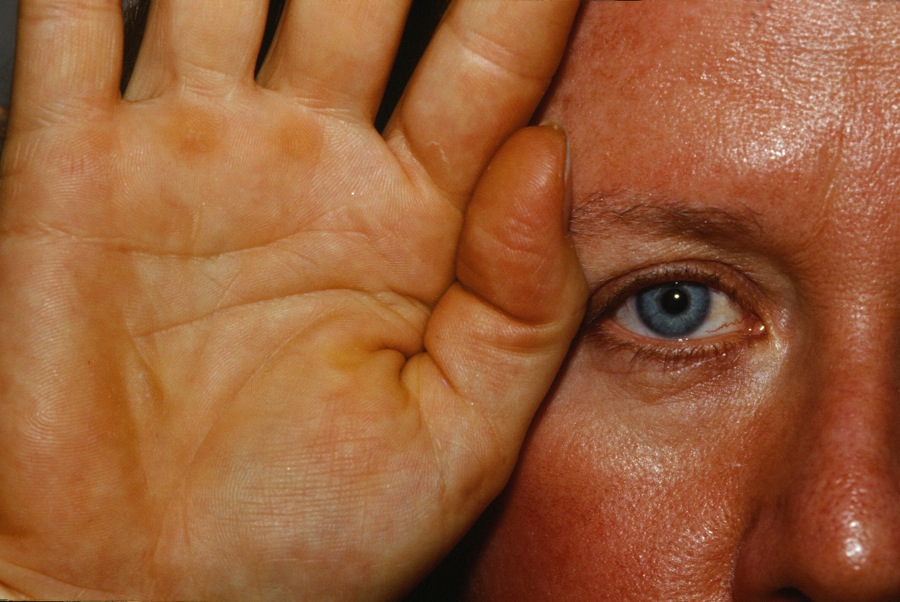 The skin is yellow but the eyes are not (as opposed to jaundice).
The skin is yellow but the eyes are not (as opposed to jaundice).
 The skin is yellow but the eyes are not (as opposed to jaundice).
The skin is yellow but the eyes are not (as opposed to jaundice).
In carotenemia, the skin (but not the sclera) takes on a yellowish hue from elevated levels of ß-Carotene.
A diffuse yellowish discoloration of the palms and soles may occur in a patient who eats large quantities of ß-carotene-containing foods, e.g., carrots, sweet potatoes, squash, green beans, papayas, and pumpkins. In contrast to jaundice, the eyes are not icteric. Rarely, it may be seen in the palate.
A diffuse yellowish discoloration of the palms and soles in a patient with type IIA hyperlipidemia in which beta-lipoprotein is elevated (e.g., hypothyroidism, nephrotic syndrome, or diabetes mellitus). This is because beta-lipoprotein is a major carrier of beta-carotene.
Metabolic carotenemia is thought to occur secondary to a deficiency in the enzyme 15-15 dioxygenase which converts beta carotene to vitamin A, with the resultant elevated beta carotene. Serum vitamin A levels may be normal or low. Typical associations include anorexia nervosa, liver disease, renal disease, hypothyroidism, and diabetes mellitus.
Homepage | Who is Dr. White? | Privacy Policy | FAQs | Use of Images | Contact Dr. White